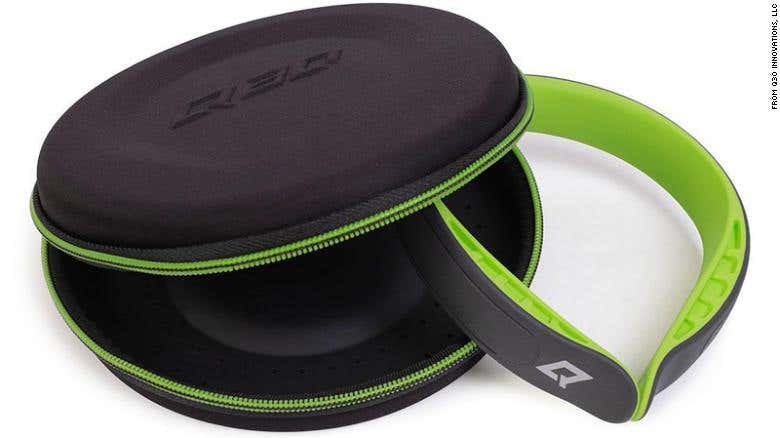FDA Authorizes Novel Device to Help Protect Athletes’ Brains During Head Impacts
Today, the U.S. Food and Drug Administration authorized marketing of a new device intended to be worn around the neck of athletes aged 13 yr

[Feb. 27, 2021: Josh Shavit, The Brighter Side of News]
Today, the U.S. Food and Drug Administration authorized marketing of a new device intended to be worn around the neck of athletes aged 13 years and older during sports activities to aid in the protection of the brain from the effects associated with repetitive sub-concussive head impacts. The non-invasive device, called Q-Collar, is a C-shaped collar that applies compressive force to the neck and increases blood volume to help reduce movement of the brain within the cranial space which may occur during head impacts. The device may reduce the occurrence of specific changes in the brain that are associated with brain injury.
“Today’s action provides an additional piece of protective equipment athletes can wear when playing sports to help protect their brains from the effects of repetitive head impacts while still wearing the personal protective equipment associated with the sport,” said Christopher M. Loftus, M.D., acting director of the Office of Neurological and Physical Medicine Devices in the FDA’s Center for Devices and Radiological Health.
Traumatic brain injury (TBI) can be caused by a forceful bump, blow, or jolt to the head or body, or from an object that pierces the skull and enters the brain. Not all blows or jolts to the head result in a TBI. According to the Centers for Disease Control and Prevention, from 2006 to 2014, the number of TBI-related emergency department visits, hospitalizations, and deaths increased by 53%.
Blunt trauma accidents, or accidents that involve being struck by or against an object, particularly sports-related injuries, are a major cause of TBI. The National Institute of Neurological Disorders and Stroke notes that anywhere from 1.6 million to 3.8 million sports- and recreation-related TBIs are estimated to occur in the United States annually.
How does it work?
When worn around the neck during sports activities, the Q-Collar provides compressive force to the internal jugular veins, which in turn increases the blood volume in the skull’s blood vessels. Typically, when people experience blunt trauma accidents, the brain moves unrestrained in the skull, which is known as a “slosh.” The Q-Collar’s increase in blood volume in those blood vessels creates a tighter fit of the brain inside the skull and reduces the “slosh” movement. By reducing the movement of the brain within the cranial space, the Q-Collar may aid in the protection of the brain from the effects of head impacts.
The Q-Collar does not replace, and should be worn with, other protective sports equipment associated with specific sports activities, such as helmets and shoulder pads. Wearers of the device should not depend on the device to protect them from all harmful effects of head impacts. Users should take steps to avoid direct impact to the head and neck. Data do not demonstrate that the device can prevent concussion or serious head injury. The Q-Collar should not be used if an individual has not been medically cleared to play contact sports.
The device can be worn for up to four hours at a time and should be replaced after two years of active use or upon the product’s expiration date listed on the package, whichever comes first. The Q-Collar is intended for over-the-counter use and will be distributed directly to consumers. However, a medical professional should be consulted if a user is unsure whether the Q-Collar is right for him or her.
Note: Materials provided above by The Brighter Side of News. Content may be edited for style and length.
Like these kind of stories? Get The Brighter Side of News' newsletter.
Tags: #New_Innovation, #Sports, #Medical_Good_News, #Concussions, #The_Brighter_Side_of_News
Joseph Shavit
Head Science News Writer | Communicating Innovation & Discovery
Based in Los Angeles, Joseph Shavit is an accomplished science journalist, head science news writer and co-founder at The Brighter Side of News, where he translates cutting-edge discoveries into compelling stories for a broad audience. With a strong background spanning science, business, product management, media leadership, and entrepreneurship, Joseph brings a unique perspective to science communication. His expertise allows him to uncover the intersection of technological advancements and market potential, shedding light on how groundbreaking research evolves into transformative products and industries.



